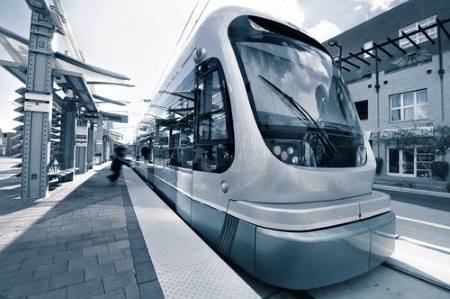Sustainable Living & Sustainable Lifestyle
Check out the top cities for green transportation
Your work location shouldn’t impose impractical or bothersome commute methods into your daily life. There are some cities that are at the top of the urban transportation game. They’ve cultivated solid systems that will ease the pain of a long commute and have invested in greener methods of public transit. If you do have to drive, make sure you know the rules of the road before you hop behind the wheel. Here is a list of cities that have exemplary transportation initiatives and systems, and well-planned urban centers that encourage walking, and promote green living.
 Los Angeles is known for its vast urban sprawl and how many of its inhabitants rely on automobiles for transportation. LA, however, has an effective light-rail system, roads that accommodate cyclists, and expansive bus and ride-share services. In Los Angeles, the Lyft app allows users to carpool with other customers and split the cost of the ride. While, LA’s subway system isn’t as intricate as New York City’s, the train routes stop at many centralized hubs. Los Angeles neighborhoods are significantly separated from one another, however they feel like city-centers in and of themselves. The Los Feliz and Silver Lake neighborhoods, which are about 2 miles east of Hollywood, both have walkscores that are in the mid-80s.
Los Angeles is known for its vast urban sprawl and how many of its inhabitants rely on automobiles for transportation. LA, however, has an effective light-rail system, roads that accommodate cyclists, and expansive bus and ride-share services. In Los Angeles, the Lyft app allows users to carpool with other customers and split the cost of the ride. While, LA’s subway system isn’t as intricate as New York City’s, the train routes stop at many centralized hubs. Los Angeles neighborhoods are significantly separated from one another, however they feel like city-centers in and of themselves. The Los Feliz and Silver Lake neighborhoods, which are about 2 miles east of Hollywood, both have walkscores that are in the mid-80s.
The Emerald City has invested many of its tax dollars into a transportation improvement plan to eliminate the prevalent gridlock traffic that plagued its freeways within the past years. The city is expanding its Link Light Rail train system, which will run from the airport to the University District by 2016. The stations of the system are located near many of the outlying neighborhoods, downtown Seattle, near the stadiums and in the more densely populated city pockets. Seattle encourages its citizens to embrace cycling as a method of transportation. The bike share company, Pronto, has more than 500 bikes and 50 stations available for public use, throughout the city. The company offers 24-hour passes, 3-day passes, annual memberships, affordable housing memberships and group rates. The city roads are abundant with bike lanes, so cyclists can commute safely.
The popular Austin neighborhoods of West University, University of Texas, North University, Central East Austin, Downtown and Triangle State all have walkscores that are within the 80s. The city has a bike score of 52, with some bike infrastructure that supports its ever-growing cycle culture. The city has about 91 car shares from RelayRides, Zipcar and Getaround, as well as a reliable and affordable bus and train system. The Capital MetroRail offers reliable service Monday through Friday between Leander and downtown Austin and from Lakeline to downtown on Saturdays. There are nine stations located along the 32-mile line and all trains stop at each station, three of which have Park & Ride lots.
Denver’s RTD light rail system is divided into the four fare zones of A, B, C and D. The light rail has six lines that make it easy to get around town, with plans for expansion in 2016. The RTD systems encourages Denver residents to bike-and-ride, as it will allow its passengers to bring their bicycles onto their trains or load them onto a metro bus bike rack. Denver also offers a bicycle share system, called B-cycle which has 87 stations and 700 bikes throughout 10 central Denver neighborhoods. The city has a bike score of 71, as the layout and cycle lanes make cycling a convenient method of transportation for most trips.